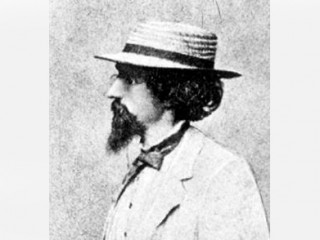
Mathew B. Brady biography
Date of birth : 1822-05-18
Date of death : 1896-01-15
Birthplace : Warren County, New York, United States
Nationality : American
Category : Famous Figures
Last modified : 2010-06-10
Credited as : Photographer and historian, Mr. Lincoln's Cameraman,
3 votes so far
The American photographer, publisher, and pictorial historian Mathew B. Brady (ca. 1822-1896 known as Mr. Lincoln's Cameraman) was famous for his portraits of eminent world leaders and his vast photographic documentation of the Civil War.
Mathew B. Brady (he never knew what the initial "B" stood for) was born in Warren County, N.Y. The exact place and year are not known; in later life Brady told a reporter, "I go back near 1823-24." He spent his youth in Saratoga Springs, N.Y., and became a friend of the painter William Page, who was a student of the painter and inventor Samuel F. B. Morse. About 1839/1840 Brady went to New York City with Page. Nothing certain is known of his activity there until 1843, when the city directory listed his occupation as jewel-case manufacturer.
The daguerreotype process had been introduced to America in 1839, and Morse became one of the first to practice the craft and to teach it. Possibly Brady met Morse through Page, and perhaps he learned to take daguerreotypes from him. In 1843 Brady added cases specially made for daguerreotypes to his line of goods, and a year later he opened a "Daguerreian Miniature Gallery." He was at once successful: the first daguerreotypes he put on public exhibition, at the Fair of the American Institute in 1844, won a medal, and he carried away top honors year after year.
Brady once said that "the camera is the eye of history." He began in 1845 to build a vast collection of portraits, which he named "The Gallery of Illustrious Americans," and two years later he opened a Washington branch, so that he could have portraits made of the presidents, cabinet ministers, congressmen, and other government leaders.
Brady sent 20 daguerreotypes to the Great Exhibition in London in 1851; they won him a medal and were greatly admired. In that year he traveled to England and the Continent. Shortly after his return he opened a second New York studio. His eyesight was now failing seriously, and he relied more and more upon assistants to do the actual photography. Chief among his many operators was Alexander Gardner, a Scotsman who was well versed in the newly invented collodion, or wet-plate, process, which was rapidly displacing the daguerreotype. Gardner specialized in making enlargements up to 17 by 20 inches, which Brady called "Imperials"; they cost $750 each. Gardner was put in charge of the gallery in Washington in 1858.
Perhaps the most famous of Brady's portraits was the standing figure of Abraham Lincoln taken at the time of his Cooper Union speech in 1861; Lincoln is reported to have said that the photograph and the speech put him in the White House.
When the Civil War broke out, Brady resolved to make a photographic record of it. The project was a bold one. At his own expense he organized teams of photographers--James D. Horan in his biography states that there were 22 of them--each equipped with a traveling darkroom, for the collodion plates had to be processed on the spot. Brady recollected that he spent over $100,000 and "had men in all parts of the Army, like a rich newspaper."
When the war ended, the collection comprised some 10,000 negatives. The project had cost Brady his fortune, and he became bankrupt. He could not afford to pay the storage bill for one set of negatives, which were sold at auction to the War Department. A second collection was seized by E. and H. T. Anthony, dealers in photographic materials, for nonpayment of debts. Today Brady's vast and brilliant historical record is divided between the National Archives and the Library of Congress in Washington, D.C.
Although he maintained his Washington gallery, Brady never fully recovered from his financial disasters. In 1895 he planned a series of slide lectures about the Civil War. While he was preparing them in New York, he became ill and entered the Presbyterian Hospital, where he died on Jan. 15, 1896.
















